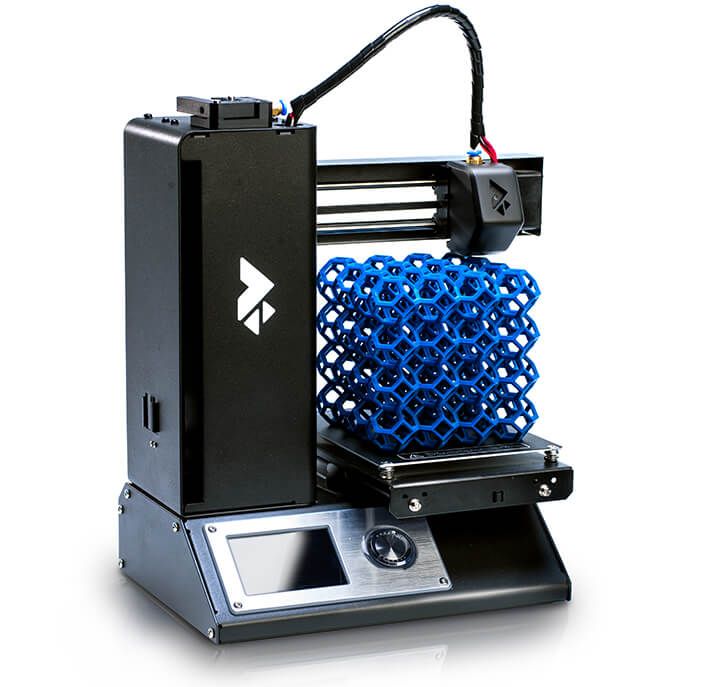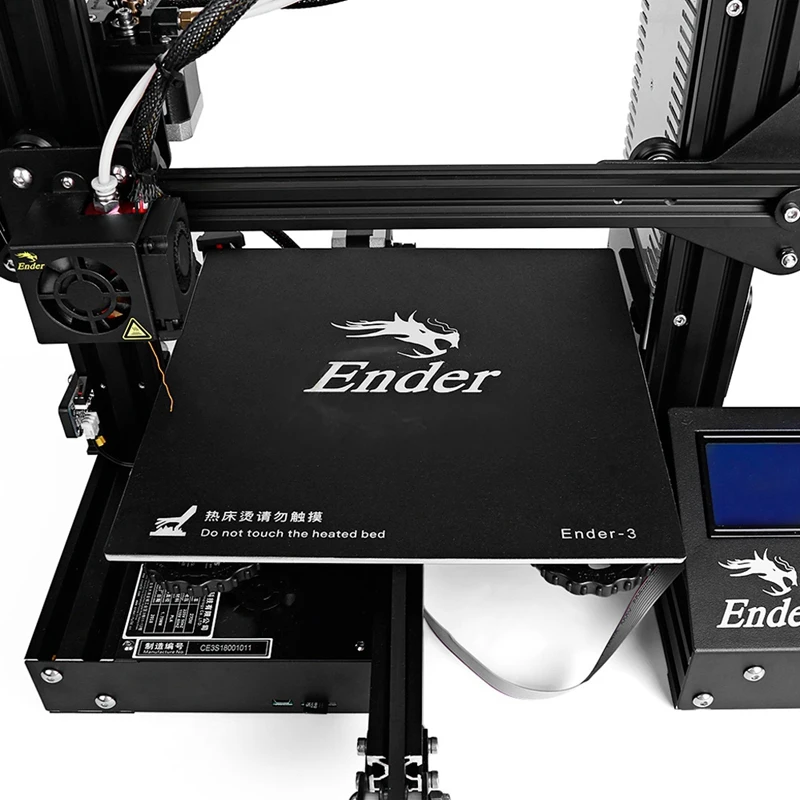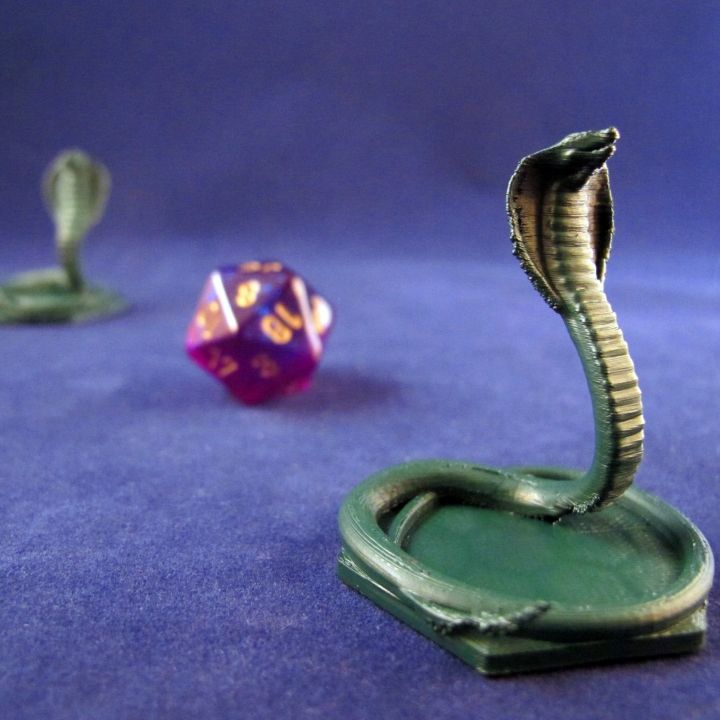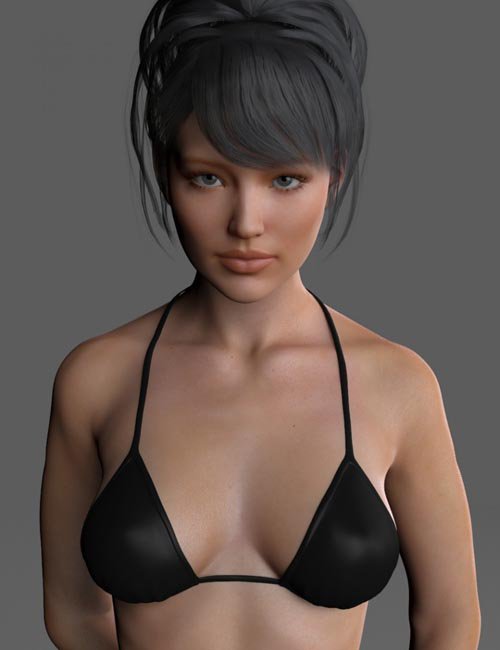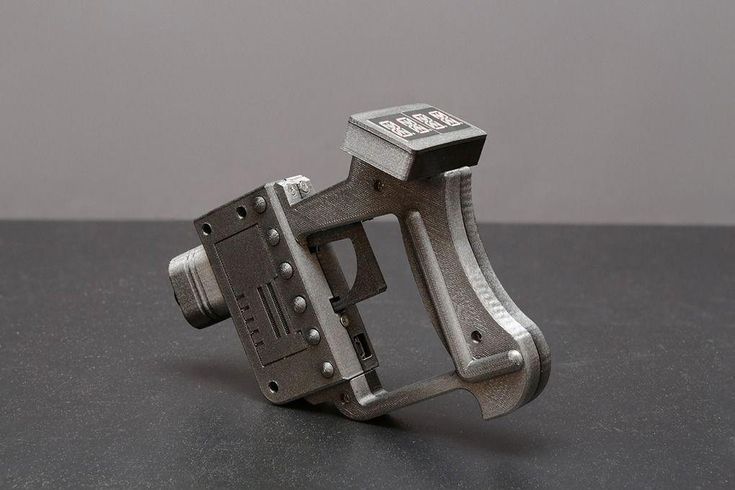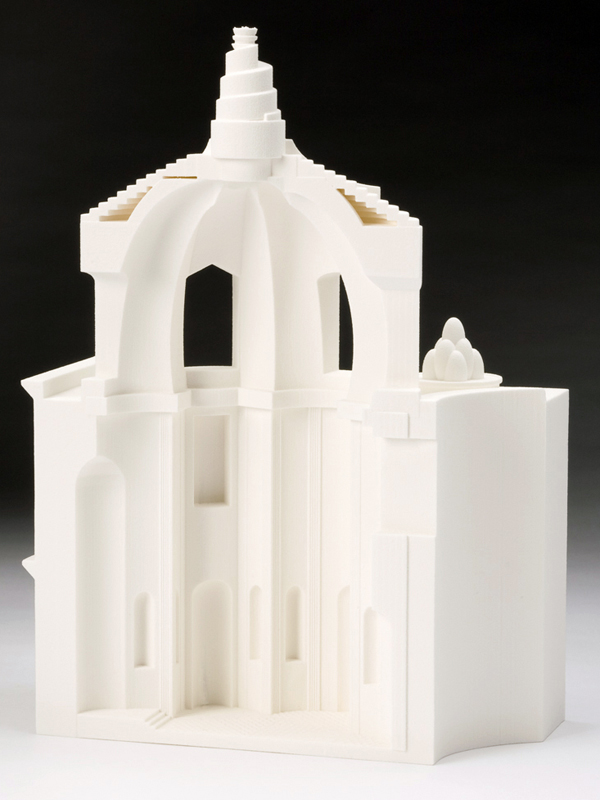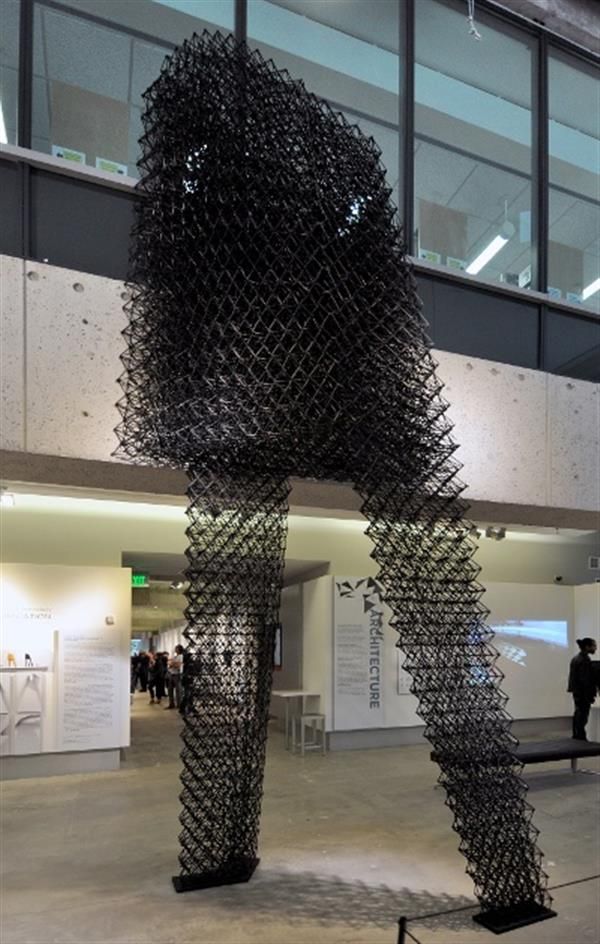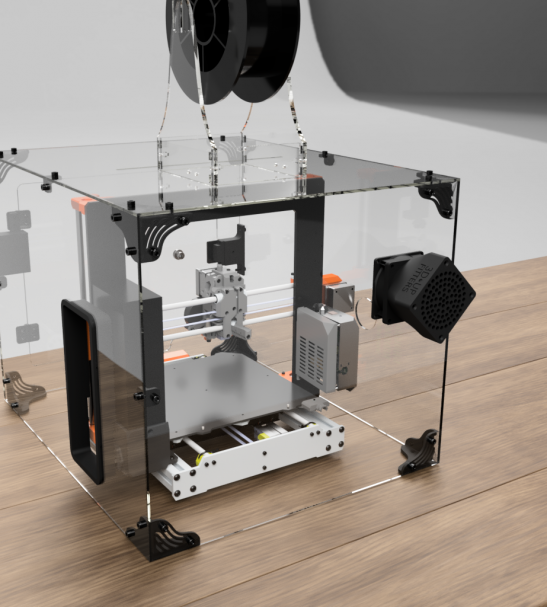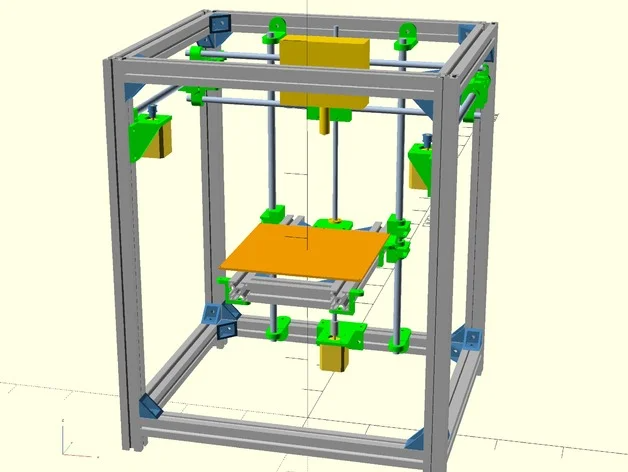Fastest budget 3d printer
7 Fastest 3D Printers 2022 In Every Price Range
One of the major gripes with 3D printing is many consider it to be slow. However, over time both the speeds of FDM and resin printers have crept up — and there are now some super-fast options for both technologies.
For industrial printing, there are printers now reaching speeds competitive with traditional manufacturing, aiming to displace injection molding.
But what are the other fastest 3D printers in the world?
We have listed the world’s fastest 3D printers in every price range below, for both FDM and resin printers – but first, let’s explain the factors that affect the speed of 3D printing.
Do Bigger 3D Printers Print Faster?
A bigger resin 3D printer does indeed print faster, but this is more in the sense of being more productive. A resin printer cures an entire layer on the XY axes, regardless of size, in one go. This means that the larger the printer, the more productive the printer is.
However, this isn’t the case for FDM printers, which need to deposit filament across the entire layer before moving on to the next.
FAST FDM PICK
Flsun Super Racer200mm/s makes it one of the fastest FDM printers around
Comes 95% pre-assembled
Available at Amazon here
FAST RESIN PICK
Anycubic Photon M3 PlusSuper-fast 100mm/h speed
Larger resin build area for scalable minis prints or larger resin models
Available at Anycubic here Amazon here
SUPER-FAST PICK
Phrozen Sonic Mega 8KExtremely high-res 8K LCD screen
Enormous build area and 70mm/h speed
Available At Phrozen here Amazon here
How Fast is a 3D Printer?
As for the technologies and 3D printers we have now, simply stating the fastest possible 3D printing speeds is difficult.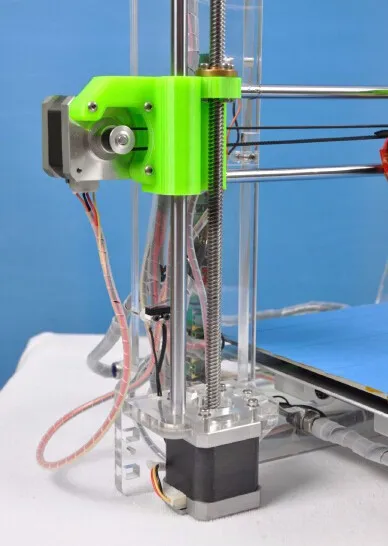
That’s because – and I know it’s frustrating to read this – it depends on several factors:
Resolution of the 3D printed part: before you start printing, you need to slice your model into layers on a 3D slicer. The more layers, and the thinner each layer, the longer the part will take to print at the same speed. A part printed with 50-micron layers will have twice as many layers as the same part printed with 100-micron layers, and take twice as long at the same speed.
- We also have a guide to high resolution 3D printers.
Quality of print: theoretically you could run a budget 3D printer at an extremely high speed, and it would still print. But the results wouldn’t be anything like how it looked on your slicer. It would be a mess of filament hairs and blobs, because the speed settings were set too fast. Some 3D printers can handle high-speed 3D printing, some cannot.
3D printing technology: how fast a 3D printer prints depends on the technology. Resin 3D printers are significantly faster than FDM 3D printers as they can cure entire layers at once, rather than depositing filament over each part of the layer. The fastest 3D printing technologies include Multi Jet Fusion and resin 3D printing technologies like MSLA.Resin 3D printing technologies are known for being faster than FDM.
Resin 3D printers are significantly faster than FDM 3D printers as they can cure entire layers at once, rather than depositing filament over each part of the layer. The fastest 3D printing technologies include Multi Jet Fusion and resin 3D printing technologies like MSLA.Resin 3D printing technologies are known for being faster than FDM.
Material: some materials are easier to print than others, putting less demand on the printer and leading to a slightly faster print.
Complexity of the model: You will be able to print a cube block far quicker than an intricate 3D printed jewelry piece. This is because you can print larger layers and at a faster print speed without a notable loss of quality, since the cube is a very simple shape with no details.
Size of print: fairly obvious, but a larger print will take far longer than a small one. A full-size vase will take around 12 hours to print in normal detail on most FDM 3D printers, but a small statue may take under an hour.
Nozzle size: for FDM 3D printing, smaller nozzles mean more intricate details can be printed more accurately, but larger nozzles can potentially print faster.
Will 3D printers get faster?
Almost certainly. We’ve already seen a number of major innovations that make 3D printers faster in the last decade. In 2012, the first delta 3D printers started to appear, which print significantly faster than previous Cartesian 3D printers.
Then, new resin 3D printer innovations such as Carbon 3D’s CLIP, and Uniz’s UDP technologies made SLA and DLP faster. Other significant speed innovations include HP’s Multi Jet Fusion technology, and also the huge advances being made in many metal 3D printers such as those by Desktop Metal and Markforged.
The Fastest 3D printers 2022 in Every Price Range
| Name and brand | Build volume (mm) | Max speed | Price | Where to buy |
|---|---|---|---|---|
| Flsun Super Racer | 260 x 260 x 330 | 200mm/s | $499 | Amazon here |
| Anycubic Photon M3 Plus | 197 x 122 x 245 | 100mm/h | $699 | Anycubic here |
| Anycubic Photon M3 Max | 298 x 164 x 300 | 60mm/h | $1099 | Anycubic here |
| Phrozen Sonic Mega 8K | 330 x 185 x 400 | 70mm/h | $2199 | Phrozen here |
| Uniz Slash UDP | 293 x 122 x 200 | 600mm/h | $1,999 | Matterhackers here |
| WASP 2040 Pro Turbo | 200 x 200 x 400 | 500mm/s | $3,400 | Amazon here |
| HP Jet Fusion 5200 | 380 x 284 x 380 | 4115cm3/h | Quote |
3DSourced is reader-supported.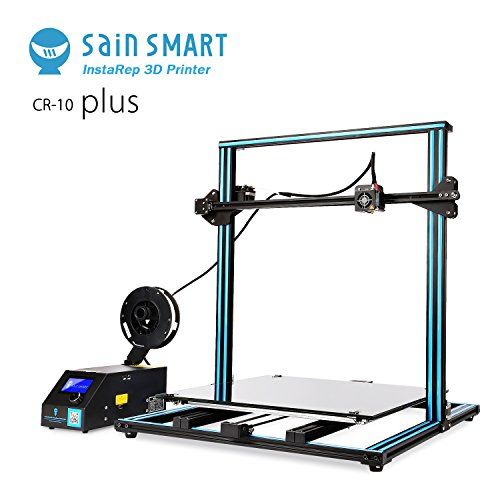 When you buy through links on our site, we may earn an affiliate commission. Learn more
When you buy through links on our site, we may earn an affiliate commission. Learn more
Flsun Super Racer – Fastest FDM 3D Printer Under $500
- Price — Check latest price at Amazon here
- Technology: FDM Delta
- Max Print Speed: 200 mm/h
- Build Volume: 260 x 260 x 330 mm
True to its speedy name, the Flsun Super Racer is a Delta FDM printer that absolutely gallops with a top print speed of 200 mm/h. It’s an upgraded version of Flsun’s QQ-S, which after some one-on-one time we found to be a competent, worthwhile printer for large projects.
Delta printers are known for offering higher speeds than their Cartesian brothers, but Flsun is pushing the boat out to new extremes with the Super Racer. Most standard FDM printers perform best at a comfortable 50-60 mm/h, while the Super Racer delivers solid quality prints at four times that.
With a decently-sized 260 x 260 x 330 mm build volume, the Super Racer is also big on vertical print capacity, ideal for those towering prints that exceed the dimensions of budget FDM printers. Throw in a thoughtful design, quality components, automatic bed leveling, breezy 20-minute assembly, a responsive, easy-to-navigate detachable touch screen, and the Super Racer comes awfully close to a speed freak’s dream 3D printer.
Throw in a thoughtful design, quality components, automatic bed leveling, breezy 20-minute assembly, a responsive, easy-to-navigate detachable touch screen, and the Super Racer comes awfully close to a speed freak’s dream 3D printer.
Now, all this speed does come with a trade-off. Delta printers, the Flsun Super Racer included, lack the accuracy and consistent print quality offered by Cartesian 3D printers. The difference is relatively negligible, but it’s a point to consider before buying for makers that favor quality over speed.
On the filament front, the Flsun Super Racer’s Bowden extruder setup works great for PLA but coughs up the usual Bowden-related jamming and clogging issues with flexibles. For example, if you’re working with TPU, you’re better off sticking to a classic Cartesian printer – ideally with a direct drive extruder.
Anycubic Photon M3 Plus/Max – Fastest Resin 3D Printers Under $1,000
- Price: $699 / $1,099 — M3 Plus Available here / M3 Max Available here
- Technology: MSLA Resin
- Max Print Speed: 100 mm/h / 60 mm/h
- Build Volume: 197 x 122 x 245 mm / 298 x 164 x 300 mm
More than simply an update to the long-running Photon series, the Anycubic Photon M3 machines are turning more than a few heads as the fastest resin 3D printer range around.
In particular, the Anycubic Photon M3 Plus proposes a top print speed of 100 mm/h. The beauty of resin printers is that they cure in layers, regardless of how much space on the build plate that layer takes. Those 100 mm/h apply whether you’re printing a single small miniature or a batch of twelve, which makes the Anycubic Photon M3 Plus exponentially more productive.
The Anycubic Photon M3 Max is no slouch either, offering a respectable 60 mm/h, but does this across a massive 298 x 164 x 300 mm. That’s the largest of any Anycubic resin printer and among the highest capacities found on consumer-grade printers, rubbing shoulders with the hulking Elegoo Jupiter and Phrozen Sonic Mega 8K.
Elsewhere, the Photon M3 duo stands out for offering excellent detail with 34 microns XY resolution on the Plus and 46 microns on the Max. The Max has a 7K LCD, one of the highest pixel counts on the market, while the Plus pushes a 6K LCD – higher than the standard 4K found on comparable printers. Both machines also ship with Anycubic excellent textured checkerboard build plate, which offers superb print adhesion.
Both machines also ship with Anycubic excellent textured checkerboard build plate, which offers superb print adhesion.
Read the full comparison: Anycubic Photon M3 vs M3 Plus vs M3 Max
Phrozen Sonic Mega 8K – Fastest High-Quality Resin 3D Printer
- Price: $2,199 — Available at Phrozen official here
- Technology: MSLA Resin
- Max Print Speed: 70 mm/h
- Build Volume: 330 x 185 x 400 mm
With the Phrozen Sonic Mega 8K, size and speed combine into arguably one of the most impressive mid-range professional resin printers on the market.
The 330 x 185 x 400 mm build volume is the largest available in this price range, and the Sonic Mega 8K darts across this printing expanse at a nippy 70 mm/h. No other printers manage to weave in such a large build volume with such high speeds; it’s always been one or the other.
The Phrozen Sonic Mega 8K allows makers to hone in on all the fine features and intricacies of even the most detailed models and minis thanks to a 43-micron resolution, propped up by a pixel-rich 15’’ 8K LCD.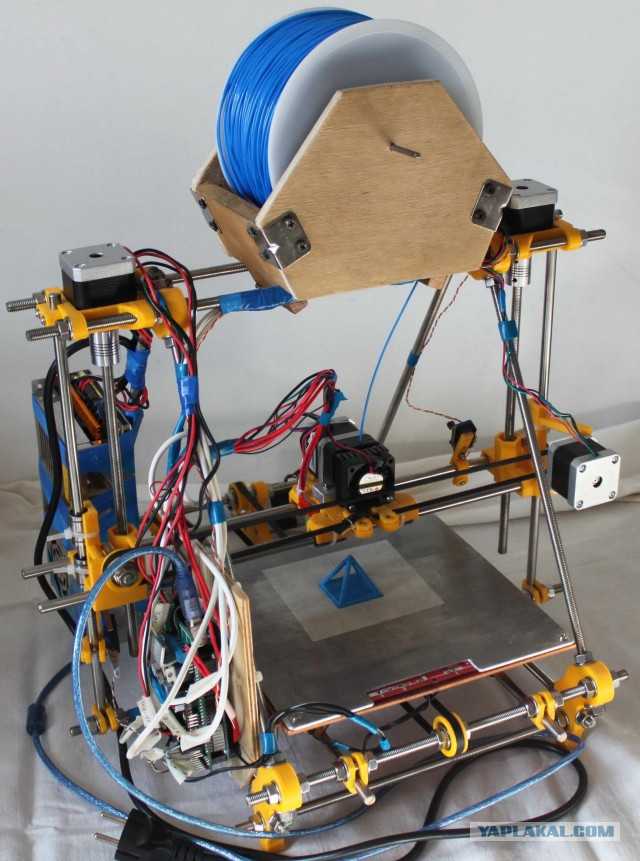 It’s a level of quality that simply isn’t currently available on any other printer in the same printer segment.
It’s a level of quality that simply isn’t currently available on any other printer in the same printer segment.
The build plate comes pre-calibrated, allowing you to print without delay once the Mega 8K lands on your doorstep. A clever dual linear rail design ensures the printer behaves and delivers those sharp details even high up into the upper reaches of the build area.
If you need a mammoth-format printer at a reasonable price to power a small business where time is of the essence, there’s little else out there that comes close to the Phrozen Sonic Mega 8K. If the build volume exceeds what you’ll conceivably ever need, a lower-cost resin printer such as the Anycubic Photon M3 Plus or even the standard M3 is likely a better use of your money. The Phrozen Sonic Mega 8K is a jumbo printer and will be far too much for most amateur makers.
Uniz Slash Plus UDP — Fastest desktop 3D printer
- Max print volume: 293 x 122 x 200 mm
- Price: $1,999 — Available on Matterhackers here
- Fastest 3D printer speed: 600mm/hour in UDP mode
Uniz have made a big impact since their original Kickstarter campaign that raised over $500,000 to produce super-fast resin 3D printers at consumer prices.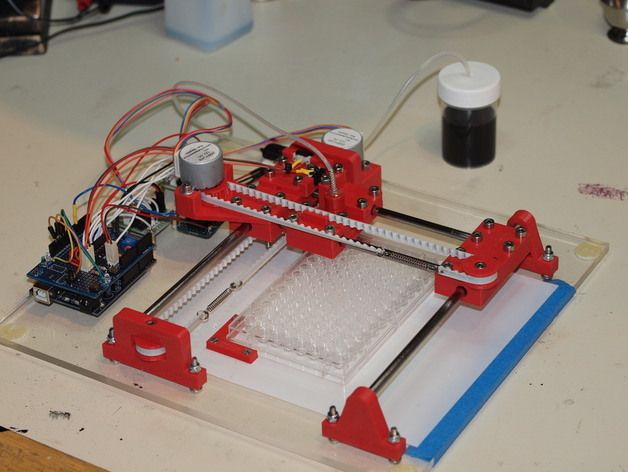 This quick 3D printer uses Uniz’s Uni-Directional Peel (UDP) technology to print far faster than its competitors, at up to 600mm/hour when in UDP mode.
This quick 3D printer uses Uniz’s Uni-Directional Peel (UDP) technology to print far faster than its competitors, at up to 600mm/hour when in UDP mode.
When not in UDP mode the maximum 3D printer speed is 200mm/hour, but this is still super fast. This is because not all parts are compatible, for example, any parts with cross sections, or fully enclosed parts cannot be printed in UDP mode; and no parts with solid infill can be printed either. You are also restricted as very tall prints cannot be printed in UDP mode, but if your part qualifies then you can print extremely quickly!
Not only is it an extremely fast 3D printer, but it’s also accurate. This SLA 3D printer has an XY resolution of 75 microns, and a minimum layer of thickness of just 10 microns. As a result, parts have very good surface finish and look almost like they have no layers at all. The printer can also calibrate itself, can be operated via your phone or table on the mobile app, and weighs just 12kg. It’s certainly one of the best speedy 3D printers for the price.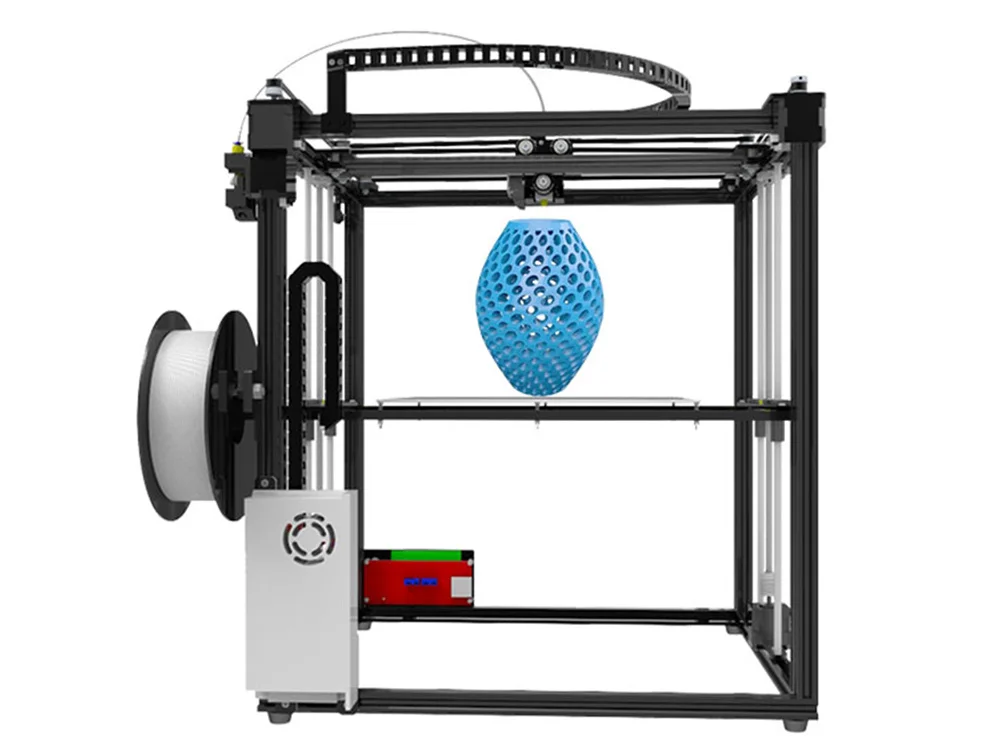
WASP 2040 PRO Turbo — Fastest 3D printer in the world
- Price: $3,400 — Available on Amazon here
- Max print volume: 200 x 200 x 400 mm
- Fastest 3D printer speed: 500mm/s recommend (some say it can print even faster!)
Delta 3D printers are known for their speed, and are the fastest FDM 3D printers in the world. The WASP 2040 PRO Turbo is a delta printer that is not only incredibly fast – at up to a recommend 500mm/s – but is also extremely accurate for an FDM printer. The resolution of up to 50 microns means very accurate and low cost prototypes and parts can be produced, and in record time. WASP claim they make the fastest 3D printers in the world for FDM.
WASP 3D printers are known for their reliability, with the Italian company ensuring the printers operate with workhorse-like consistency. It can print 3D printer filaments including ABS, PLA, PETG and Nylon, so if you want to print stronger parts from one of the tougher plastics you still can, and you can use third party filaments if you prefer – the WASP allows for these. and you can choose to buy the WASP 2040 as either a single or dual extruder 3D printer.
and you can choose to buy the WASP 2040 as either a single or dual extruder 3D printer.
Unlike most RepRap 3D printer deltas, the WASP 2040 Turbo comes fully assembled, so those who aren’t masters of DIY do not need to worry. You can also choose to order it either as a single or dual extruder 3D printer based on your printing needs.
It’s the world’s fastest 3D printer for FDM, and also accurate and reliable – what more could you want for under $5,000!
- It also has a variation designed specifically as a clay 3D printer.
HP 3D Jet Fusion 5200 — Fastest Industrial 3D printer
- Price: Requires a quote
- Max print volume: 380 x 284 x 380 mm
- Fastest 3D printer speed: 4115cm3/hour
HP have only been actively involved in the 3D printing industry for the last few years, but have brought such technological advantages in that short space of time. The Jet Fusion 5200 epitomizes this, marking uncharted territory for 3D printing where it is now considered viable for mid-range production.
Multi Jet Fusion has always been known for its fast 3D printing speed, but the Jet Fusion is even faster than its predecessors. With speeds up to 4115cm3/hour, it’s faster than the Jet Fusion 4200 (4000cm3) and the 3200 (2800cm3) – and these were already some of the fastest 3D printers in the world. The high-quality 1200dpi print head resolution allows for extremely accurate parts with smooth surface finishes and crisp, sharp edges.
The Jet Fusion 5200 combines this astonishing speed with low part cost and scalability. Whole layers can be printed at once, rather than tracing each layer as with Selective Laser Sintering, meaning multiple parts can be printed at once without a drop off in productivity. Multi Jet Fusion isn’t known for its versatility of materials, but PA12, PA11 Nylons and TPU are strong materials with good properties for a variety of industries. It’s extremely fast, extraordinarily accurate, and a rare example of 3D printers being competitive in mid-volume part production – very exciting.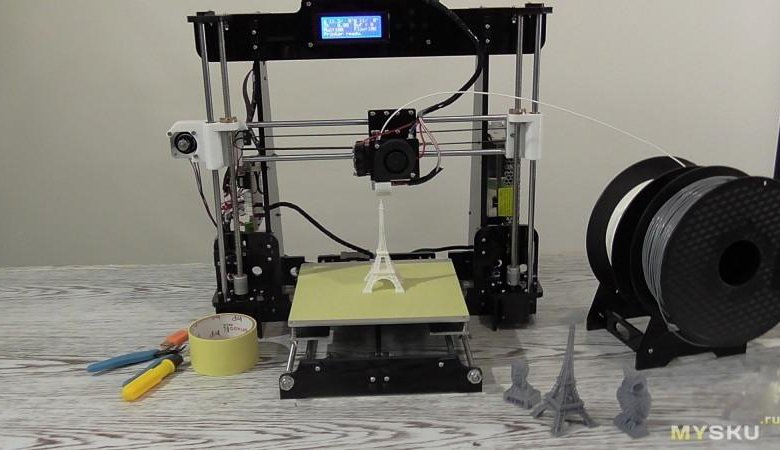
Do you really need a fast 3D printer?
Speed is always useful; nobody chooses to wait in a queue longer than they need to. However, with the quickest 3D printers, there are some cases where you can’t take advantage of this speed.
For FDM 3D printers, some materials become volatile and print with imperfections if you don’t slow right down, like PEEK, PC, and others. Printing at 150mm/s+ would just ruin your prints, so the speed is useless here.
Also, if you are printing a very simple object like a cube, speed becomes less useful as you can just use very large layer heights and print quickly anyway.
However, if your business depends on quick production, then absolutely go for a printer that can either print objects very quickly, or multiple objects simultaneously. The ability to rapidly prototype new designs and innovate quicker is invaluable, and other industries like 3D printed jewelry production or hearing aids need to be able to print custom designs at the highest speeds possible.
So, it depends. For hobbyists, speed is great for quality of life and printing all the cool things and useful 3D prints you can. For industry it can be more necessary, and businesses often opt for an industrial 3D printer than can meet their production speed requirements.
How Fast Can PLA Be 3D Printed?
The fastest FDM printers, such as the Flsun Super Racer, can print PLA up to 200 mm/h. However, the most common 3D printers, such as the Ender 3, can print PLA at around 50 to 80 mm/h without sacrificing print quality.
Related articles:
- Best large resin 3D printers (bigger = faster!)
- Best delta FDM 3D printers
- Best FDM 3D printers
The 7 Fastest FDM 3D Printers In 2022 (For Consumers & Professionals)
- Last Updated: November 1, 2022
- Pat Nathaniel
3D printers are a great way to get your part, but if you’re impatient, then you want the fastest on the market. At the same time, you don’t want to waste money or compromise on quality.
At the same time, you don’t want to waste money or compromise on quality.
Don’t worry; this extensive list has you covered.
We will dive into the fastest consumer printers, then take a look at some industrial options. Afterward, we’ll take a look at what print speed is good for a normal printer and why printers can’t go faster.
Let’s take a look at some of the fastest 3D printers available for you to buy today.
Anycubic Mega S
Click For Best Price
Check Latest Price
FLSUN QQ-S
Check Latest Price
No products found.
Wasp 2040 PRO Turbo
Check Latest Price
Table of Contents
- Quickest 3D Printers For Consumers
- 1. Anycubic Mega S (Best Value)
- 2. FLSUN QQ-S (Quietest / Editor’s Choice)
- 3. Delta WASP 2040 Turbo 2 (Fastest / Premium Choice)
- 4. Uniz Slash Plus UDP
- 3D Printers For Industrial Use
- 5.
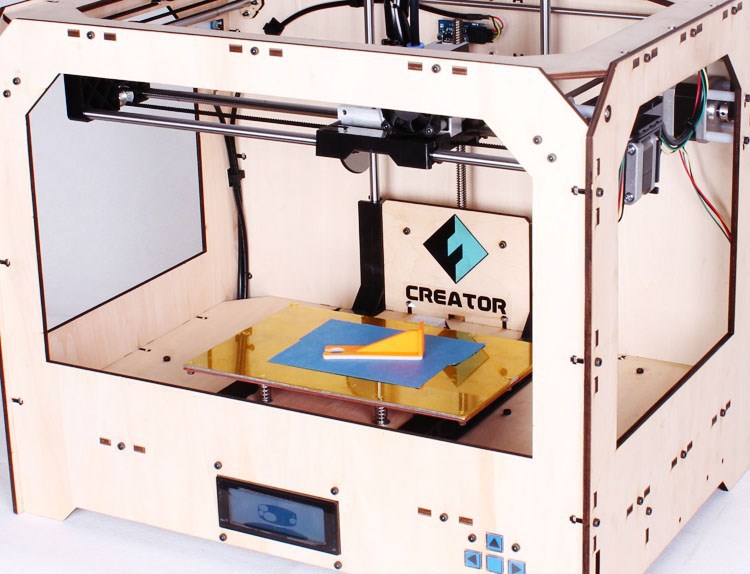 Cincinnati Incorporated BAAM
Cincinnati Incorporated BAAM - 6. Massivit 1800
- 7. HP Jet Fusion 5200
- 5.
- What is a Good Print Speed for 3D Printers?
- Relationship Between Speed and Quality
- Limiting Factors for Speed
- Cooling the Plastic
- Tiny Motors Driving the Motion
- 3-Axis Setup
- How to Make a 3D Printer Faster
- Conclusion
Quickest 3D Printers For Consumers
These are consumers printers that focus on speed. You’ll get your part back fast, and you won’t have to pay an arm and a leg to print them with an industrial printer.
1. Anycubic Mega S (Best Value)
Build volume: 210 x 210 x 210 mm | Layer Resolution: 200 mm/s | Max Print Speed: 100 mm/s
For the price, the Mega S delivers great results. The accuracy, build volume, and printing speeds are rare gems in this price category.
It comes with a touch screen to make things easier for you, and the UI is clean.
The noteworthy thing about the Mega S is how many features they added while still keeping the price low:
- The frame is metal, which means better results for you.
- The build plate is heated, and the hot-end gets hot enough to print a ton of different materials.
- A filament sensor will tell you when you’re out of material and it will automatically pause the print. When it detects new filament is loaded, it will resume right from where it stopped. You can use third-party filaments as well.
Out of the box, you’ll have to make a few connections before you can start printing. Also, the filament is side-mounted, which typically leads to some reliability issues.
The Anycubic Mega S delivers great performance and a healthy build volume that won’t break the bank.
In its price category, it is the fastest 3D printer, and it’s a great choice for people who are looking for a budget 3D printer.
- Good build volume
- Hotend and build plate heat up to high temp
- Added features are great
- Clean UI
- Great user experience, easy to use
- Some assembly required
- Side-mounted filament
Click for Best Price
Check Latest Price
2.
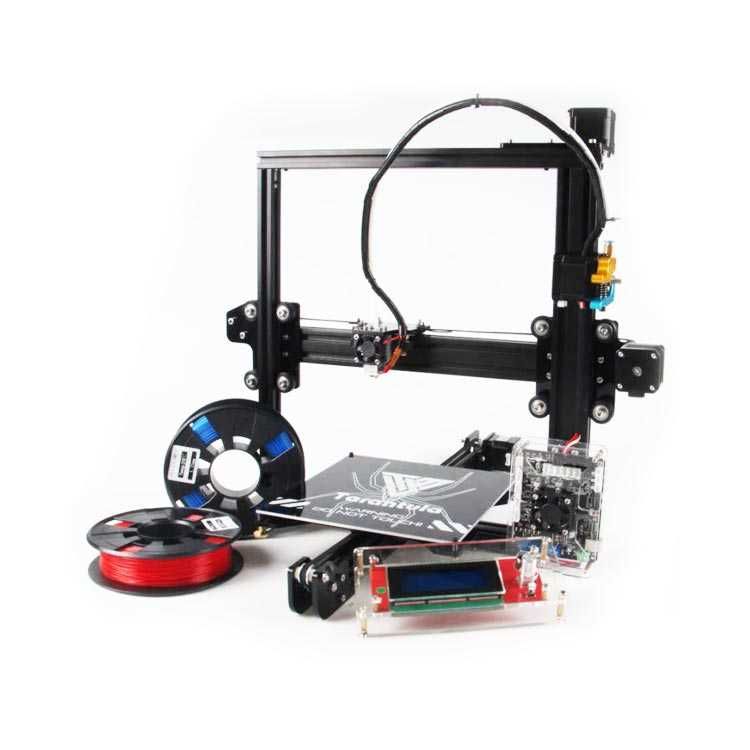 FLSUN QQ-S (Quietest / Editor’s Choice)
FLSUN QQ-S (Quietest / Editor’s Choice) Build volume: 255 x 255 x 360 mm | Layer Resolution: 50 micron | Max Print Speed: 300 mm/s
Next on the list is the QQ-S by FLSUN.
It’s hard to know what all the letters stand for, but it’s a good guess that the S stands for “silent.” This unit’s claim to fame is the whisper that it prints at.
This printer’s default running speed is 60 mm/s, however, it can go up to 300 mm/s. And some users even reported higher speeds with a bit of tweaking.
The build volume is the largest on this list on the consumer side.
This printer also will resume a print after it’s paused or stopped. Out of the box, it takes about a half-hour to finish the assembly and set up before you can start printing. The filament is top-fed, which is great for space savings so you can put it in your office.
Another great feature is its unique lattice build plate, which makes it easy to remove prints.
While we don’t recommend the QQ-S for beginners, overall this 3D printer is our choice for a fast, delta 3D printer with the right price.
- Large build volume
- Accurate
- Super silent
- Can print with most filament types
- Auto-leveling bed
- Unique build plate
- Intuitive touchscreen
- High-speed printing
- Takes time to fully assemble unit
- Manufacturer support is underwhelming
- Not ideal for beginners
Check Latest Price
3.
 Delta WASP 2040 Turbo 2 (Fastest / Premium Choice)
Delta WASP 2040 Turbo 2 (Fastest / Premium Choice) Build volume: 200 x 200 x 400 mm | Layer Resolution: 50 mm/s | Max Print Speed: 500 mm/s
You might recognize the Delta WASP 2040 from our best delta 3D printer review; the Turbo 2 is that and more.
This printer can be bought with a single or dual extruder. Either one will print at speeds up to 500 mm/s and travel up to 1,000 mm/s.
You won’t find numbers like this for an FDM printer anywhere else.
Even more impressive is the final print quality. That was the main area of improvement that his printer has over its predecessor.
If you blink during the printing process, you’ll miss it, but you’ll be left with a beautiful part.
The build volume also has a huge height dimension. You can print skyscrapers on this printer in the blink of an eye.
The framework is really sturdy. This means fewer vibrations for your print, which results in a more reliable printer. This also helps achieve better accuracies.
This also helps achieve better accuracies.
This is a Delta-style printer, which means it moves differently than a standard Cartesian 3D printer. It makes it even more fun to watch the printer move around, has better accuracy, and can achieve quicker speeds.
The Delta WASP 2040 Turbo 2 is a much-welcomed sequel. It’s fast, accurate, and has a large build volume. It’s the fastest FDM printer that’s commercially-available, and it’s not as expensive as you might think.
- Sturdy frame
- Reliable, great accuracy, good precision
- Generous build volume
- Expensive for beginners, but you get a lot for the price
- Delta printers are hard to mechanically troubleshoot and fix
Check Latest Price
4.
 Uniz Slash Plus UDP
Uniz Slash Plus UDP Build volume: 192 x 120 x 200 mm | Layer Resolution: 200 mm/s | Max Print Speed: 1,000 cm3/hr
Let’s take a look at the Uniz Slash Plus UDP.
You might recognize the name from their Kickstarter campaign. They raised over $500,000 with the mission of creating a super-fast commercial-grade 3D printer. Mission accomplished.
This is the fastest commercial-grade 3D printer on the market. This is largely due to the fact that it’s an SLA-type printer.
The other good news about it being an SLA printer means you get to enjoy a better accuracy and precision with your prints.
The price is high for this unit because you are getting a great piece of machinery. It achieves a great printing speed and doesn’t have to sacrifice performance or accuracy at all.
The build volume is pretty good, but it’s small for the price.
Uniz also put a lot of effort into keeping maintenance low for this printer. They say you can go 1,000 hours of printing without touching the screen, and there won’t be any issues.
They say you can go 1,000 hours of printing without touching the screen, and there won’t be any issues.
There are also a lot of great features built into the printer. You can remotely monitor your print to make sure everything is going smoothly.
You can start the print remotely via WiFi printing. To make things easier, the printer will automatically calibrate before each print.
The Uniz Slash+ is not only quick, but there’s a lot of ease-of-use and features built-in. It’s a great choice for a commercial printer if you care about accuracy, speed, and don’t mind the price tag.
- User interface is smooth and easy to use
- Final print quality is amazing
- SLA offers a lot of benefits over FDM
- High price tag for beginners
- Length of the build volume is small
Check Latest Price
3D Printers For Industrial Use
If you’re looking for the titans of the space, and price is not an issue, you will love these next few printers.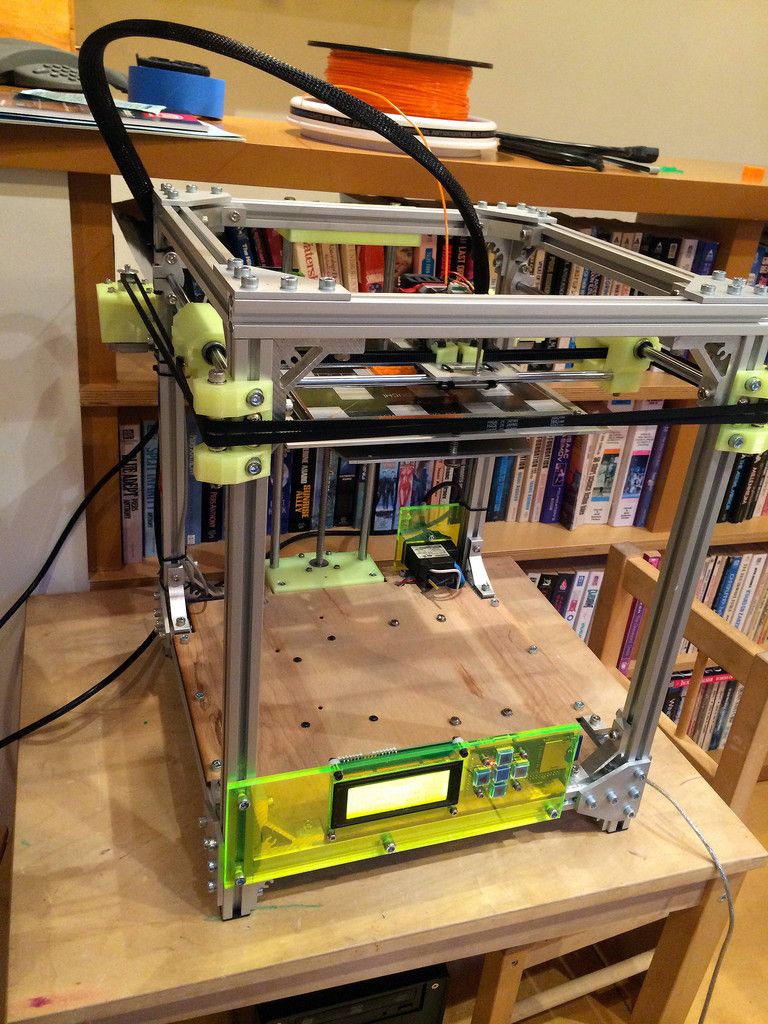
These guys are designed specifically for industrial use. They’re faster, bigger, and badder than any commercial printer you’ll find on the market.
They are all hundreds of thousands of dollars, but they are also revolutionizing the 3D printing industry and what can be achieved.
5. Cincinnati Incorporated BAAM
Build volume: 6,000 x 2,300 x 1,900 mm | Layer Resolution: 1,250 mm/s | Max Print Speed: 80 lbs/hr
The first speedy printer for industrial use is the BAAM.
That stands for Big Area Additive Manufacturing. This might come as a shock, but it’s an additive manufacturing machine that has a big area. A really big area.
This printer looks like a small room filled with magic. The creators realized that if you want a massive build volume, you need an impressive printing speed.
The print speed is 80 pounds per hour.
The BAAM has printed a ton of big items in the past. A kayak, an electric car, and a replica F-22 to name a few.
A kayak, an electric car, and a replica F-22 to name a few.
The extruder gets hot enough to handle a lot of different materials.
The printer is built within a steel frame, which means vibrations won’t disturb your massive prints.
Though the company won’t release the retail price, they do offer quotes to print your project on the massive BAAM machine. Serious buyers can reach out to BAAM to get a price on the machine as well.
This printer is the best option if you’re looking to print massive objects quickly. This comes with a big price tag, but it’s easy to overlook when you realize what the BAAM can produce.
- Massive build volume
- Steel framework
- Touchscreen
- Can print a wide range of filament materials
- Company won't release the price
- Takes up a lot of space (obviously)
- Low resolution
Check Latest Price
6.
 Massivit 1800
Massivit 1800 Build volume: 1,800 x 1,500 x 1,200 mm | Layer Resolution: 500 mm/s | Max Print Speed: 1,000 mm/s
Massivit 1800 is another heavy-hitting printer you want to take a look at.
This printer was made specifically for visual communication. It can make large signs, props, and displays.
It opts for Gel Dispensing Printing rather than FDM. This results in a better finished product and a more aesthetically pleasing print.
You’ll see this printer used to make movie props, art exhibits, and different sculptures.
The 1800 definitely has the required build volume to make large props. It also prints at a speed of a meter a second which is one of the fastest in the industry.
Purchasing this unit will set you back about a quarter of a million dollars. You can also get a quote to use one of the company’s 3D printers for your needs.
You can also arrange the unit to be a dual extruder printer, which opens the door for even more possibilities.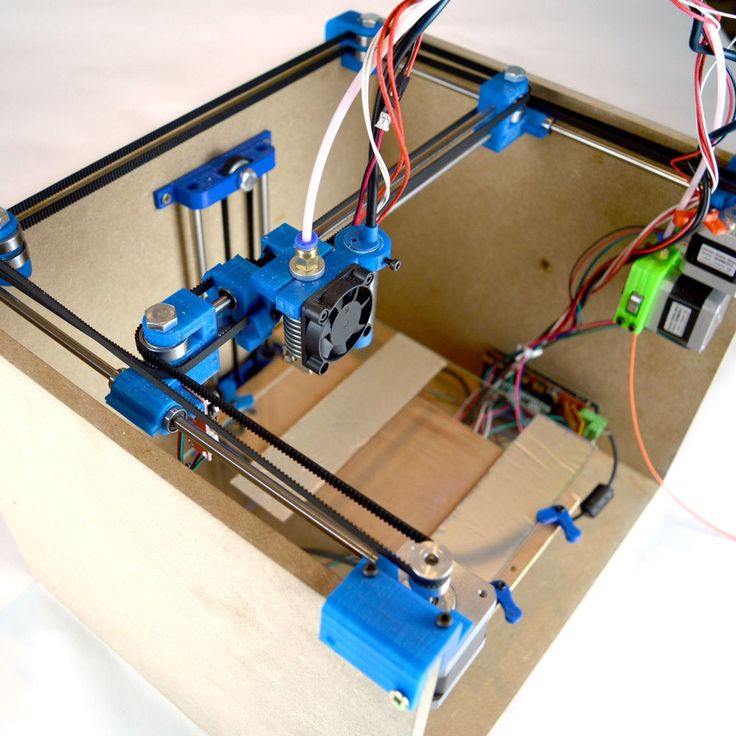
The designers also made the printer really easy to use. A few clicks of a button and you’re on your way. The UI is smooth and provides troubleshooting feedback.
The Massivit 1800 is the leader in the visual communication space. The prints are highly detailed, smoothly contoured, and they’re done really fast.
- Great print quality
- Huge build volume
- Easy to use
- Very expensive
- GDP technology is trickier to troubleshoot
Check Latest Price
7. HP Jet Fusion 5200
Build volume: 380 x 284 x 380 mm | Layer Resolution: 1,200 dpi | Max Print Speed: 4,115 cm3/hr
The HP Jet Fusion 5200 is a modern marvel in the industrial 3D printing world.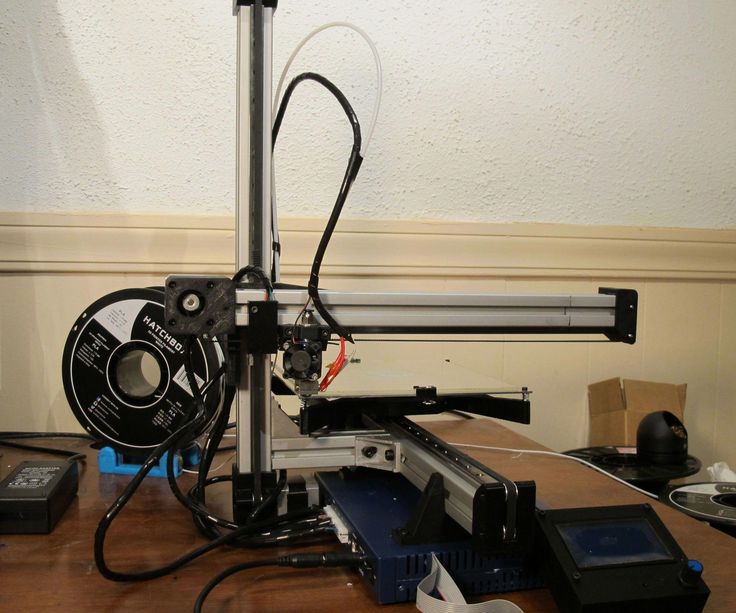
This is the fastest printer currently on the market.
HP (yes, it’s that HP) has only been in the 3D printing world for a few years, but they’ve made some huge players in the space. Who knew that paper printing was so akin to 3D printing?
Their 5200 is the top of the Jet Fusion line they have, and it’s the fastest model. It prints at a staggering pace of 4,115 cm3/hr or 1,143 mm3/s.
The print speed isn’t measured in mm/s due to the speed of the technology used.
It uses Multi Jet Fusion, which is a different printing technology than SLA or FDM, which you might be familiar with. MJF lets you print whole layers at a time rather than tracing the layer line by line, as FDM printers do.
The resolution of the printer is super crisp.
The build volume isn’t as big as the other industrial printers, but that isn’t the focus of this printer. The 5200 will get you your print faster than any other printer around.
For reference, if you make a single part that’s as large as the build volume (380 x 284 x 380 mm), it will complete the print in as low as 10 hours – this is strikingly fast.
You’ll need to get a quote for pricing on this machine, but the manufacturer hints that the sticker price is over $250,000.
This might be the first 3D printer that can compete with other manufacturing methods for mid-volume part production.
The HP Jet Fusion 5200 is a super-fast 3D printer that gives you accurate, precise, and crisp parts faster than any other printer around. It’s the newest of their three-machine lineup, and it’s worth every penny.
- Fastest printer on the market
- Accuracy, reliability, and resolution are incredible
- Final print quality is excellent
- The first viable option for mid-volume part production
- Pricey unit
- Build volume could be bigger
- MJF technology has steep learning curve compared to FDM
Check Latest Price
What is a Good Print Speed for 3D Printers?Source: Youtube The Technology ManA good print speed really depends on what you’re using your printer for, and it’s all about personal preference.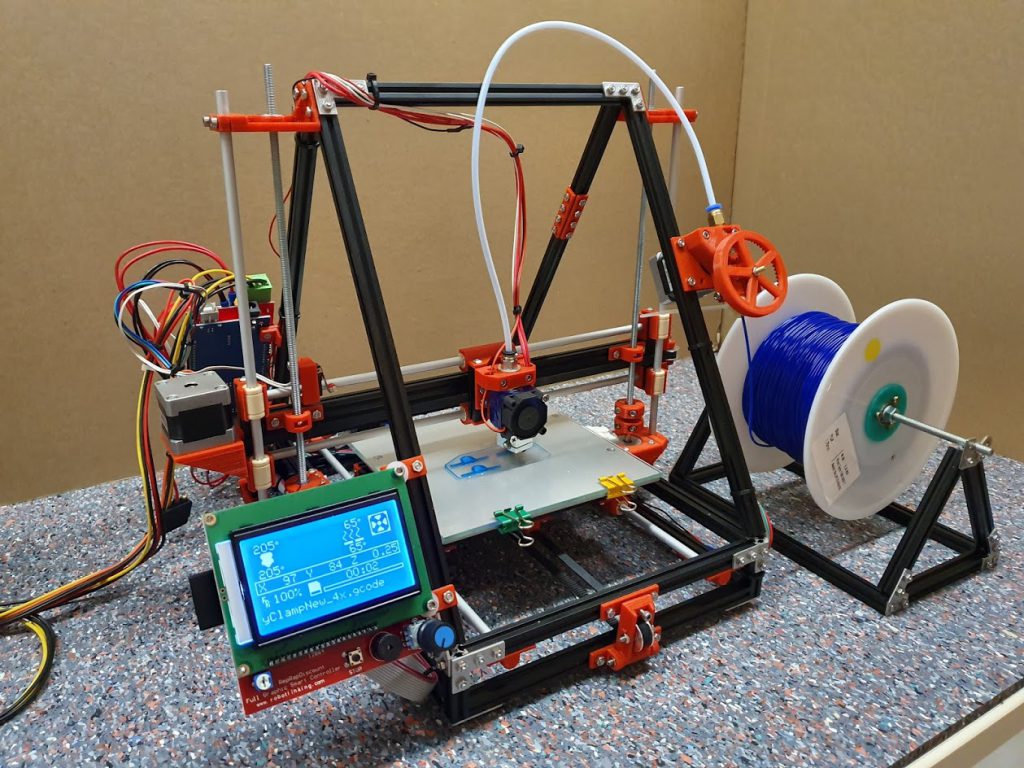
For a recreational printer that you’re just using for fun, realistically nothing’s wrong with 1 mm/s – it’s just going to take a lot of patience.
3D printer manufacturers know that we aren’t patient, so they upped that number a lot.
As you look around the market, you’ll find that a lot of commercial printers can hit 40-60 mm/s comfortably.
For a little more money, you can hit 100 mm/s on a commercial printer. The higher-end units will run around 150 mm/s.
Manufacturers suggest running at 60% of the max speed so you get a higher quality.
But how is quality related to speed?
Relationship Between Speed and QualitySpeed and quality seem to be related in every industry – if your mechanic is the fastest in the world, you’re going to be sitting on the side of the road a lot.
3D printers are the same in this sense, but for a technical reason.
The actual speed of a printer moving in a straight line doesn’t affect the print a ton.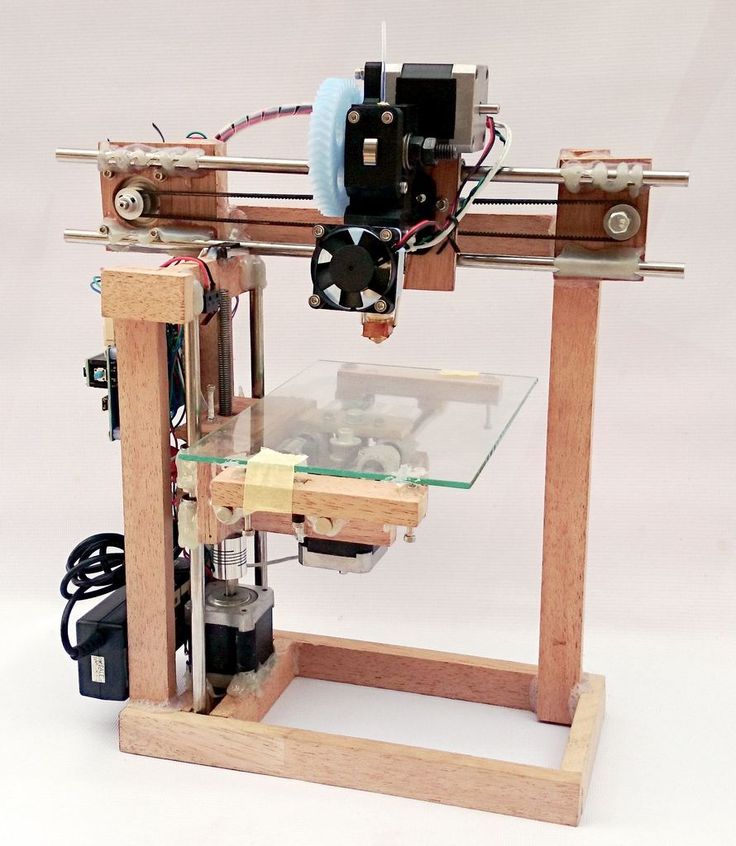 It’s the change in speed that does.
It’s the change in speed that does.
When you’re in a car and you stomp on the gas or brake pedal hard, your body will lurch. When a 3D printer suddenly accelerates or slows down, the same thing happens.
When the 3D printer lurches, the print quality suffers. You’ll get stringers, wobbly sections, fuzzy exterior walls, and an inconsistent build.
A ton of effort has to go into ramping the printer up to speed and decelerating it without hurting the print.
There are other reasons why the speed can hurt the quality of print.
Limiting Factors for SpeedDon’t let this list fool you, a majority of printers on the market are painstakingly slow in comparison.
So what slows down 3D printers? Why can’t ever printer churn out speeds like the WASP or the HP Jet Fusion 5200?
Let’s look at the answer in terms of FDM printers.
If you recall, FDM printers work by laying down hot plastic from an extruder head that moves on a 3-axis setup, driven by tiny motors. Every step of this process limits how fast you can print
Every step of this process limits how fast you can print
The first thing that limits how fast you print is how long it takes the hot plastic to cool.
Since you’re building on top of previous layers, the first layer has to be solidified enough before adding the second layer.
Imagine you’re painting a wall, but you don’t wait for the primer to dry before applying the first coat of paint. The result is similar to 3D printers.
The layers will drag, deform, and might get caught on the extruder nozzle. In other words, your final print will be unrecognizable.
Tiny Motors Driving the MotionIf you want a 3D printer to be small, quiet, and inexpensive, you need tiny motors to run the operation.
- Check out our review of the smallest 3D printers here
This is fine because the extruder isn’t heavy either, so you don’t need a lot of power.
If you want the printer to move faster, you need bigger, heavier, stronger motors. This would call for a complete redesign of how 3D printers look, and the added weight would be a huge problem.
This would call for a complete redesign of how 3D printers look, and the added weight would be a huge problem.
The tiny motors are another limiting factor to the speed.
3-Axis SetupThe 3-axis setup (or gantry) is the final big hurdle.
It’s tough to understand how this limits speed without a deep explanation, but it works for the same reason that trains run on a single track.
Single-axis motion is really easy to speed up and predict the outcome. When you add the y- and z-axes, things become more unpredictable, and more vibration affects the process.
Your 3D printer relies on predictability and few vibrations. That’s the secret sauce to get good quality on your final print.
That’s why the printers have to take it slow on a 3-axis gantry, so the final prints turn out good.
Let’s see what can be done to make 3D printing faster.
How to Make a 3D Printer Faster3D printers can be faster by getting rid of the limiting factors described above.
- Get rid of the jerk associated with quickly getting up to speed and slowing down.
- Use materials that cool a lot quicker or don’t require cooling.
- Step away from the tiny motors used to drive 3-axis printers.
- Lastly, get rid of the 3-axis setup altogether.
The way printing companies achieve this is by getting away from FDM altogether. They’ll opt for SLA, GDP, or MJF technologies which eliminate one or all of these limiting factors for speed.
Unfortunately, the way to make a 3D printer faster is to get away from FDM printers and move to another technology of printer.
ConclusionIf you want to print quickly, there aren’t a lot of printers that can do so without hurting the final print quality. This shortlist of printers can manage to do it successfully, but it comes at a price.
You’ll be shelling out more cash and potentially getting a smaller build volume. You have to consider which is the most important for your application and go from there.
You have to consider which is the most important for your application and go from there.
When it comes to true speed, the printers on this list stand in a league of their own.
Related Articles:
- Best CoreXY 3D Printer review
- Best DIY 3D Printer Kit review
- Best 3D Printer under 200 review
Pat Nathaniel
Pat is the editor-in-chief at Printing Atoms. He has a BS in Mechanical Engineering from the University of Florida and wants to spread the word on 3D printing. When he's not writing, he likes to tinker with his Ender 3 Pro, test filament brands, and scuba dive.
overview of budget printers for the home
Today, 3D printers are used in various fields: from medicine to construction. There are also models designed for the home. There is a misconception that they cost a lot of money. In fact, there are inexpensive models that, in terms of their technical characteristics, are not inferior to expensive devices.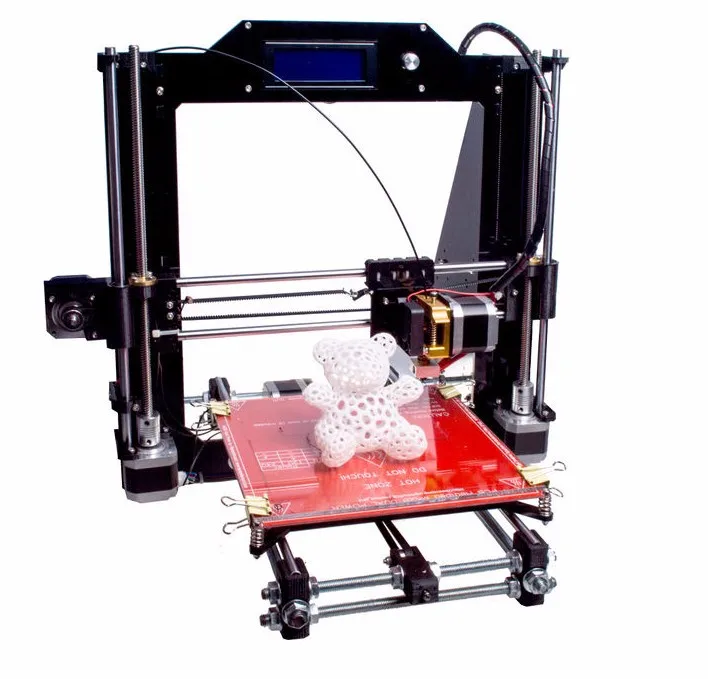 The article presents an extensive selection of such models, among which you can easily and quickly find the best budget 3D printer in 2022.
The article presents an extensive selection of such models, among which you can easily and quickly find the best budget 3D printer in 2022.
Our review of budget 3D printers will help you choose a reliable, functional and inexpensive device. It includes only proven models with decent performance and high performance, while their cost remains affordable.
Creality3D Ender 3 Pro
From £150
Creality Ender 3 Pro features improved performance and rigid Y-axis extrusion with a 40×40 aluminum extrusion, resulting in high overall print plane stability. It is worth noting that the model is equipped with a C-MAG magnetic printing substrate, which makes it easy to peel off the printout from the work surface. The cup of photopolymer resin is fixed on the LCD screen with UV backlight. 28 matrix LEDs are equipped with individual focusing lenses, which improves the quality of illumination and printing.
Anycubic Photon S
From 19 000 ₽
This is an updated and improved version of a cheap photopolymer 3D printer. The model features print quality with good resin. The high resolution of the screen, coupled with a small diagonal, allows you to print models with excellent detail. Anycubic Photon comes with its own slicer. It is easy to master the program even for a beginner.
The model features print quality with good resin. The high resolution of the screen, coupled with a small diagonal, allows you to print models with excellent detail. Anycubic Photon comes with its own slicer. It is easy to master the program even for a beginner.
Wanhao Duplicator 10
From 12 000 ₽
Budget 3D printer designed for the home. Recommended for children and teenagers as a creative toy. The device will also be of interest to adults who dream of mastering the unusual world of 3D printing and modeling at the initial level. The model is distinguished by high positioning accuracy of the printing nozzle (along the X and Y axes - 112 microns, along the Z - 25). It is worth noting that before printing, you will need to calibrate the moving and printing units. Calibration is carried out using a sheet of paper and screws, as with most cheap models.
Anet A8
From 13 000 ₽
The manufacturer has chosen a unique approach by creating a "moving magnetic screen". The LCD display provides simple and convenient operation of the device. The extrusion mechanism ensures good compatibility with flexible materials.
The LCD display provides simple and convenient operation of the device. The extrusion mechanism ensures good compatibility with flexible materials.
Creality3D Ender 3
It runs on 24V, 16 amp power supply. The block contacts are covered with a molded cover with a connector and a switch. The device itself is connected to the power supply with an XT60 connector. Despite the low price of the Creality3D Ender 3, the print quality remains top notch.
Wanhao Duplicator i3 Plus Mark II
From 11 000 ₽
This is a good inexpensive printer that uses FDM (Fused Deposition Modeling) technology. It should be noted that in this model the external control unit is now located directly in the device case. The manufacturer equipped the Wanhao Duplicator i3 Plus Mark II with an MK10 extruder with a nozzle with a diameter of 0.4 mm and a full-color touchscreen display.
Anet A6
From 14 000 ₽
Anet A6 has an acrylic frame and a single nozzle extruder. The operating temperature range allows the use of the most common types of plastic - ABS, PLA, HIPS, PVA.
The operating temperature range allows the use of the most common types of plastic - ABS, PLA, HIPS, PVA.
What to look for when choosing a budget 3D printer
Criteria that will help you choose an inexpensive 3D printer:
- Working chamber size. A large area allows you to create models of the required size without the need for separate production of parts. In this case, it is also possible to run many parts in one "seat", resulting in a reduction in the makeready factor.
- Nozzle diameter. Performance depends on this indicator. The higher it is, the more material the extruder extrudes per unit time. It should be borne in mind that in this case the printing time will be reduced, however, the quality of performance will deteriorate.
- Print layer height. The lower it is, the less shagreen on the surface of the model.
- Materials used. It all depends on your preferences and needs. Many printers allow you to print from a variety of materials.

- There are models that are designed for the home, and there are professional printers used, including in medicine.
Given these criteria, you can buy a device that will please you with its performance. Such models are presented in our review of budget 3D printers.
Top 20 Inexpensive 3D Printers ($199 to $1000)
3DPrintStory Reviews Top 20 Inexpensive 3D Printers ($199 to $1000)
Just 10 years ago, a 3D printer cost over $100,000. Today, you can easily find a cheap 3D printer for under $200. This is amazing.
Naturally, the lower the price, the more restrictions.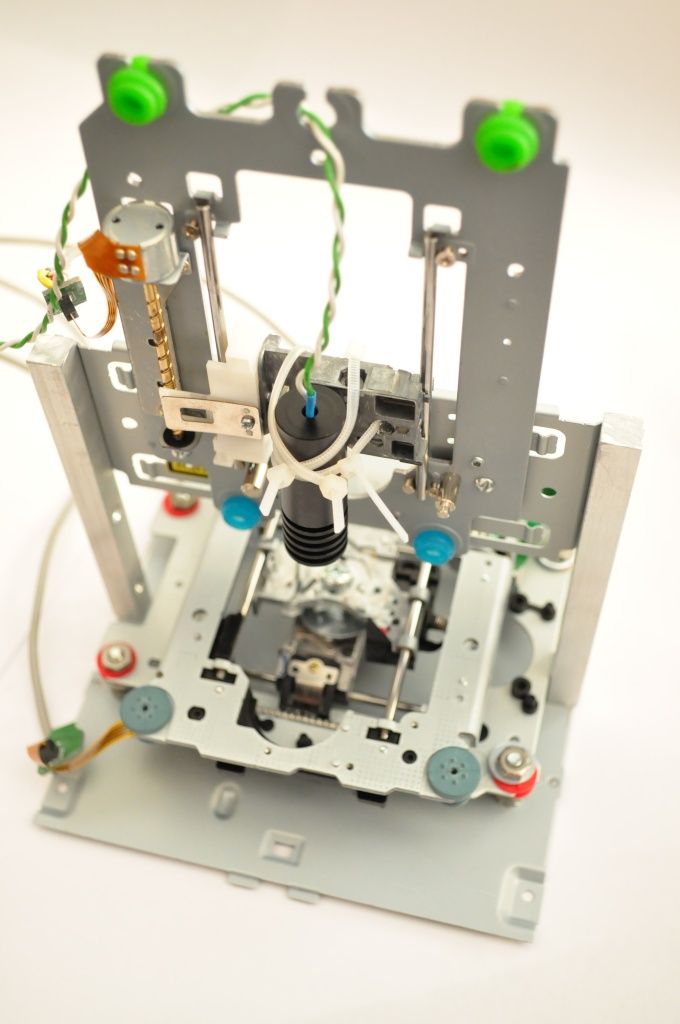 Some of the printers on our list will not have a heated bed and the workspace will be small. Naturally, the quality of most of the models presented below cannot compete with more expensive counterparts.
Some of the printers on our list will not have a heated bed and the workspace will be small. Naturally, the quality of most of the models presented below cannot compete with more expensive counterparts.
But with a little patience and diligence, it is quite possible to achieve high-quality 3D printing on a printer that costs half the price of a flagship smartphone. And it's really cool!
Important note : All 3D printers in this top are supplied assembled by the manufacturer. If you have free time and want to spend less money, you can buy DIY kits and assemble the 3D printer yourself according to the instructions.
List of the best cheap 3D printers in the $200 to $1000 price range
If you want to buy them, even if you live in large cities such as Kyiv, Moscow, St.
Petersburg, Minsk, it may turn out that these models will not be in the online stores of your city or they may be with a decent mark-up relative to the cost that indicated in the article.
Since most of them are European / American, it is possible that they will not be in stores at all.
Therefore, before making a choice, I recommend looking directly at eBay, Amazon, Aliexpress, etc. - many sellers on these planforms deliver to the CIS countries within 1-4 weeks on average.
It is especially worth monitoring these platforms during the discount period - Black Friday or Chinese New Year (Aliexpress or Gearbest) - prices on such days can be 2 or more times lower than usual and it is worth waiting for a few weeks.
Monoprice MP Select Mini ($199)
Probably the best 3D printer on our list. Why? Because the Monoprice MP Select Mini is an impressive development with a thoughtful, compact design at a very low price. This model has a quick-change steel material feed wheel, a cooler for cooling the nozzle, a color LCD screen, a heated table, plus the ability to transfer models for 3D printing via microSD or USB.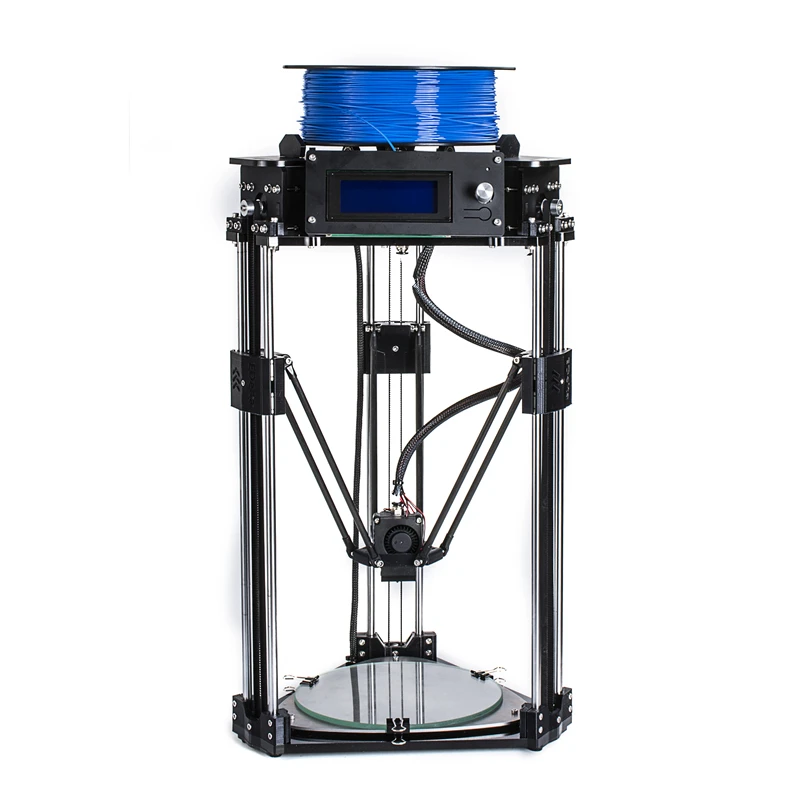
The heated bed and the wide temperature range of the extruder are especially pleasing, because for such a small price you get the opportunity to print in different materials: from ABS B to PLA or exotic materials like conductive PLA plastic, wood, metal-based composites and PVA.
For those who are worried about the lack of a guarantee - for such a price it is possible without it. This model is upgradeable. For example, you can install a new nozzle, change the table and add WiFi connectivity.
Small working space - 120 x 120 x 120 mm. Over time, this will definitely not be enough for you.
Specifications of cheap 3D printer Monoprice MP Select Mini
- Printer type: FDM;
- 3D printing materials: ABS, PLA, exotic;
- Working space: 120 x 120 x 120 mm;
- Minimum layer height: 100 microns;
- Number of extruders: 1;
- 3D printing speed: 55 mm/s;
- Compatible with materials from other manufacturers: yes;
- Heated table: yes;
- Nozzle diameter: 1.
 75 mm;
75 mm; - Control panel on 3D printer: yes;
- Connection: SD card, USB.
Back to 3D printer list
M3D Micro Retail ($249)
The M3D Micro 3D printer hit the market thanks to Kickstarter. This model was presented with an incredible price of $349.
The working space of the M3D Micro is 109 x 113 x 166 mm. There are several body color options. The company has implemented "Micro Motion Technology" - a set of innovative solutions - thanks to which you get excellent quality 3D printing at a small price.
Today, this low-cost 3D printer already costs even less than the price announced on Kickstarter. You can buy it for $249with a 12 month warranty. By the way, it is already possible to pre-order the next "pro" version.
Specifications of cheap 3D printer M3D Micro Retail
- Printer type: FDM;
- 3D printing media: PLA;
- Working space: 116 x 109 x 113 mm;
- Minimum layer height: 50 microns;
- Maximum layer height: 350 microns;
- Number of extruders: 1;
- XY accuracy: 15 microns;
- Open source: no;
- 3D printing speed: 55 mm/s;
- Compatible with materials from other manufacturers: yes;
- Heated table: yes;
- Nozzle diameter: 1.
 75 mm;
75 mm; - Control panel on 3D printer: no;
- Connection: USB.
Back to the list of 3D printers
XYZprinting da Vinci Mini ($289)
The Da Vinci Mini is a successful attempt at making a 3D printer user-friendly. This model has only one button and 5 multi-colored indicators that reflect the current status of 3D printing. In addition, this affordable 3D printer is WiFi capable so you can control it over a network in your home, office or lab.
Unfortunately, you can only use the manufacturer's own 3D materials. On average, they cost 20% more than usual. However, the company also argues that the materials used (PLA) will be 100% non-toxic.
Specifications of cheap 3D printer XYZprinting da Vinci Mini
- Printer type: FDM;
- 3D printing media: PLA;
- Working space: 150 x 150 x 150 mm;
- Minimum layer height: 100 microns;
- Number of extruders: 1;
- Open Source: no;
- Compatible with materials from other manufacturers: no;
- Heated table: no;
- Nozzle diameter: 1.
 75 mm;
75 mm; - Control panel on 3D printer: yes;
- Connection: USB, WiFi.
Back to 3D printer list
Monoprice Maker Select V2($299)
The next cheap 3D printer with a good reputation is the Monoprice Maker Select V2.
This model is an analogue of the Wanhao Duplicator i3, which, in turn, borrowed the design from the Prusa i3. But this does not affect the quality, as the Monoprice Maker Select V2 is easy to use and gives excellent 3D printing results.
Monoprice Maker Select V2 design feature is that the power supply and control panel are placed outside the 3D printer. The working space of this model is 200 x 200 x 180 mm. And this is really a good indicator for the money.
Specifications of cheap 3D printer Monoprice Maker Select V2
- Printer type: FDM;
- 3D printing materials: ABS, PLA, exotic;
- Working space: 200 x 200 x 180 mm;
- Minimum layer height: 100 microns;
- Number of extruders: 1;
- Open Source: software;
- Compatible with materials from other manufacturers: yes;
- Heated table: yes;
- Nozzle diameter: 1.
 75 mm;
75 mm; - 3D printer control panel: yes;
- Connection: USB, SD card.
Back to the list of 3D printers
New Matter MOD-t ($299)
New Matter is a young startup that offers a 3D printer MOD-t - An interesting design with a minimalistic design. This cheap 3D printer is WiFi enabled so you can manage print settings and print from your computer, tablet or smartphone. The working space is 150 x 150 x 125 mm. Thanks to the case, the noise during its operation is reduced. But the most interesting and attractive thing about MOD-t is the price. Only $299. In general, this is an interesting, high-quality model.
Specifications of cheap 3D printer New Matter MOD-t
- Printer type: FDM;
- 3D printing media: PLA;
- Working space: 150 x 100 x 125 mm;
- Minimum layer height: 100 microns;
- Number of extruders: 1;
- Open Source: no;
- Compatible with materials from other manufacturers: yes;
- Heated table: no;
- Nozzle diameter: 1.
 75 mm;
75 mm; - Control panel on 3D printer: no;
- Connection: USB, WiFi.
Back to the list of 3D printers
Printrbot Play ($399)
The Printbot Play is a very popular budget 3D printer that is often used in education. This inexpensive, reliable model, which is almost entirely made of metal.
The working space is 100 x 100 x 130 mm. Printbot Play has an extruder manufactured by the company itself - Alu Extruder v2. The body is made of powder coated steel and aluminium. SD slot provided.
You can upgrade the basic design of the Printrbot Play with a heated stand or increase the Y-axis stroke.

Back to 3D Printer List
Wanhao Duplicator i3 Plus ($459)
The Wanhao Duplicator i3 Plus is an upgraded version of the popular Wanhao Duplicator i3 (which in turn is based on the Prusa i3).
The main features of this cheap 3D printer are a large working space of 200 x 200 x 180 mm, a steel frame, electronics integrated into the design itself (previously it was taken out separately), a slot for a full-size SD card and a touchscreen display for control.
Wanhao Duplicator i3 Plus Cheap 3D Printer Specifications
- Printer type: FDM;
- 3D printing materials: ABS, PLA, exotic;
- Working space: 200 x 200 x 180 mm;
- Minimum layer height: 100 microns;
- Number of extruders: 1;
- Open Source: design and software;
- Compatible with materials from other manufacturers: yes;
- Heated table: yes;
- Nozzle diameter: 1.75 mm;
- 3D printer control panel: yes;
- Connection: USB, SD card.

Back to the list of 3D printers
Flashforge Finder ($499)
FlashForge Finder is one of the newest 3D printers on our list. This affordable 3D printer offers an average working space of 140 x 140 x 140mm.
This Finder features a transparent sidewall design so you can view the 3D printing process from any angle. A color display is installed, it is possible to transfer data via WiFi network. The printer comes with some supplies and a USB flash drive, so you can start 3D printing almost immediately.
Specifications of cheap 3D printer FlashForge Finder
- Printer type: FDM;
- 3D printing media: PLA;
- Working space: 140 x 140 x 140 mm;
- Minimum layer height: 100 microns;
- Number of extruders: 1;
- XY accuracy: 11 microns;
- Open Source: no;
- Compatible with materials from other manufacturers: yes;
- Heated table: no;
- Nozzle diameter: 1.
 75 mm;
75 mm; - 3D printer control panel: yes;
- Connection: USB, WiFi.
Back to 3D printer list
XYZprinting da Vinci Jr. 1.0 Pro ($499)
What's so special about the da Vinci Jr. 1.0 pro? This is a new model from XYZPrinting, which includes many advanced features, such as support for printing materials from other manufacturers and increased speed of 3D printing.
Also features an auto-calibration mechanism, a closed chamber with a unique cooling system, and a 0.3mm nozzle option for high-quality printing of fine model details. All in all, this is a great 3D printer with a lot of useful features and at a low price.
Specifications of cheap 3D printer da Vinci Jr. 1.0 Pro
- Printer type: FDM;
- 3D printing media: PLA;
- Working space: 150 x 150 x 150 mm;
- Minimum layer height: 100 microns;
- Number of extruders: 1;
- Open Source: no;
- Compatible with materials from other manufacturers: yes;
- Heated table: no;
- Nozzle diameter: 1.
 75 mm;
75 mm; - Control panel on 3D printer: yes;
- Connection: USB, SD card.
Back to 3D printer list
XYZprinting da Vinci Jr. Mix 2.0 ($599)
XYZprinting provides a wide range of low cost 3D printers. And paying attention to each model is quite difficult, although many of them are very interesting.
XYZprinting da Vinci Jr. Mix 2.0 stands out because it can print with two different materials and mix them to create multi-colored models. This dual-color 3D printing technology is rare in this price range ($500 to $1,000), so if you're interested in experimenting with multicolor printing, XYZprinting da Vinci Jr. Mix 2.0 is a great choice.
However, there is a drawback. This 3D printer is not compatible with materials from other manufacturers, so you will have to buy special materials from XYZprinting (as we mentioned above, they cost 20% more, but are not toxic).
Specifications of cheap 3D printer XYZprinting da Vinci Jr.
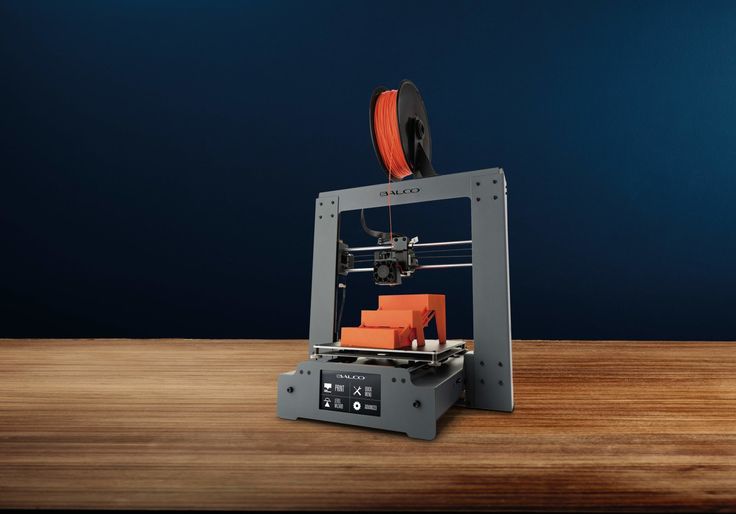 Mix 2.0
Mix 2.0 - Printer type: FDM;
- 3D printing media: PLA;
- Working space: 150 x 150 x 150 mm;
- Minimum layer height: 200 microns;
- Number of extruders: 1;
- Open Source: no;
- Compatible with materials from other manufacturers: no;
- Heated table: no;
- Nozzle diameter: 1.75 mm;
- Control panel on 3D printer: yes;
- Connection: USB, SD card, WiFi.
Back to 3D printer list
Printrbot Simple ($599)
Printrbot Simple is the flagship of the Printbot empire. This model has a great open design with a solid aluminum frame and a working space of 150 x 150 x 150mm. This inexpensive 3D printer comes fully assembled at a very good price. As you need and want to experiment, you can add a heated table and expand the workspace in the horizontal plane.
Specifications of cheap 3D printer Printrbot Simple
- Printer type: FDM;
- 3D printing media: PLA;
- Working space: 150 x 150 x 150 mm;
- Minimum layer height: 100 microns;
- Number of extruders: 1;
- 3D printing speed: 80 mm/s;
- Open Source: design and software;
- Compatible with materials from other manufacturers: yes;
- Heated table: optional;
- Nozzle diameter: 1.
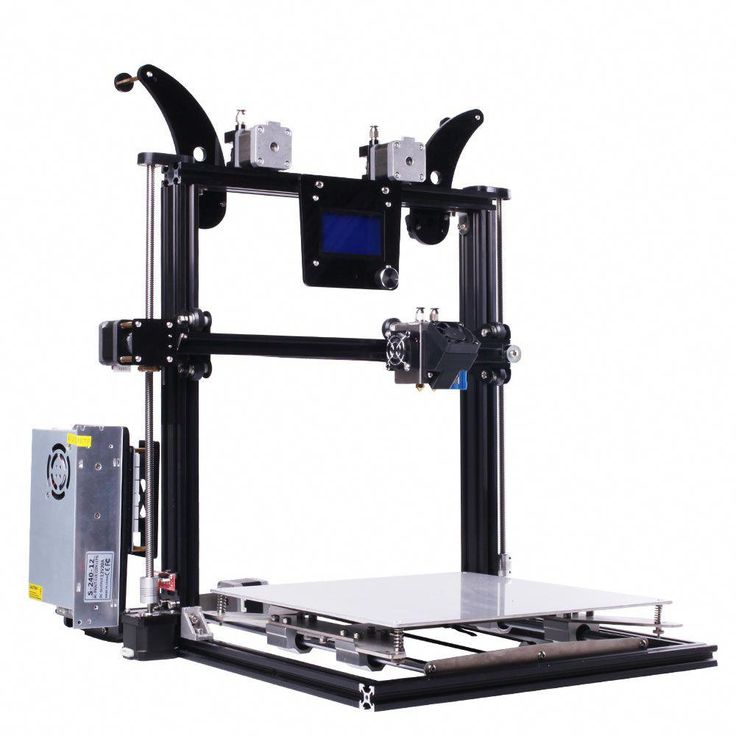 75 mm;
75 mm; - Control panel on 3D printer: no;
- Connection: USB.
Back to the list of 3D printers
UP mini 2 ($599)
The UP mini 2 is a low cost 3D printer that packs in impressive design and functionality. For starters, it has a touch screen panel and the ability to connect via WiFi.
But the most interesting is further. Implemented power failure protection system. 3D printing will continue after the emergency stop. Built-in HEPA air filtration system. Automatic detection of the height of the extruder nozzle. A separate, closed container for the material, thanks to which it does not deteriorate under the influence of moisture from the environment.
Great 3D printer for a small price. The only thing that upsets me a little is the small working space - 120 x 120 x 120 mm.
Specifications of cheap 3D printer UP mini 2
- Printer type: FDM;
- 3D printing materials: PLA, ABS;
- Working space: 120 x 120 x 120 mm;
- Minimum layer height: 150 microns;
- Maximum layer height: 350 microns;
- Number of extruders: 1;
- Open Source: no;
- Compatible with materials from other manufacturers: yes;
- Heated table: yes;
- Nozzle diameter: 1.
 75 mm;
75 mm; - Control panel on 3D printer: yes;
- Connection: USB, WiFi.
Back to the list of 3D printers
Monoprice Maker Select Ultimate ($699)
The Monoprice Maker Select Ultimate is an extraordinary beast that combines elements from two leaders in the world of 3D printing - Zortax and Ultimaker. The Monoprice Maker has an aluminum perforated printing table, which was offered in the Zortax M200 (thanks to this table, the grip of the base of the model with the table is much better), and the software part is almost identical to Ultimaker 2 (very user-friendly interface and functionality).
This model uses a "Bowden extruder", that is, the feed blocks and nozzle are separated, unlike direct feed. This improves reliability and reduces the likelihood of 3D printing errors (although, most likely, it was necessary to sacrifice printing speed, as the weight of the printing unit increases). Given the cost, this is a good model, the analogues of which are much more expensive.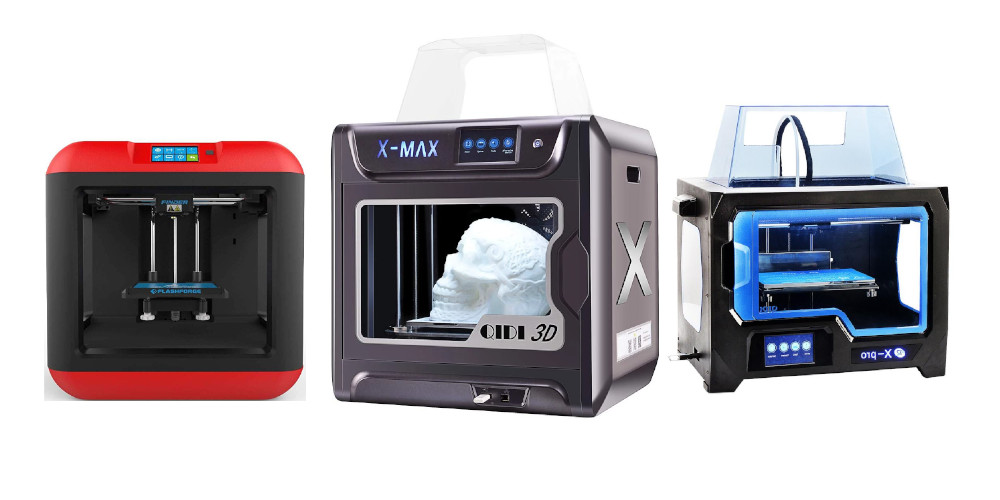
Specifications of cheap 3D printer UP mini 2
- Printer type: FDM;
- 3D printing materials: PLA, ABS, exotic;
- Working space: 200 x 200 x 175 mm;
- Minimum layer height: 20 microns;
- Number of extruders: 1;
- Open Source: no;
- Compatible with materials from other manufacturers: yes;
- Heated table: yes;
- Nozzle diameter: 1.75 mm;
- Control panel on 3D printer: yes;
- Connection: USB, SD card.
Back to the list of 3D printers
Robo C2 ($799)
The Robo C2 is a small 3D printer with tons of connectivity options. Using a specialized application, you can monitor the status of 3D printing from your smartphone or tablet. It can be connected to a Chromebook. Thanks to the built-in slicing program, you do not need to install additional printing software.
Probably the most impressive is the integration with Amazon Alexa. Users can stop, cancel and check the status of 3D printing in real time using voice commands.
What does this inexpensive 3D printer offer? Working space 127 x 127 x 150 mm. The 3D printing speed is 300 mm/s and the resolution is 20 microns. There is a built-in 3.5'' color touch screen, a system for monitoring the amount of remaining material for printing, automatic calibration and a removable self-aligning print platform. The only drawback is that the table is not heated, so you have to use PLA plastic.
Specifications of cheap 3D printer Robo C2
- Printer type: FDM;
- 3D printing media: PLA;
- Working space: 127 x 127 x 150 mm;
- Minimum layer height: 20 microns;
- Number of extruders: 1;
- Open Source: software;
- Compatible with materials from other manufacturers: yes;
- Heated table: no;
- Nozzle diameter: 1.75 mm;
- Control panel on 3D printer: yes;
- Connection: USB, WiFi.
Back to the list of 3D printers
Wanhao Duplicator 4S ($829)
The Duplicator 4S has 2 extruders.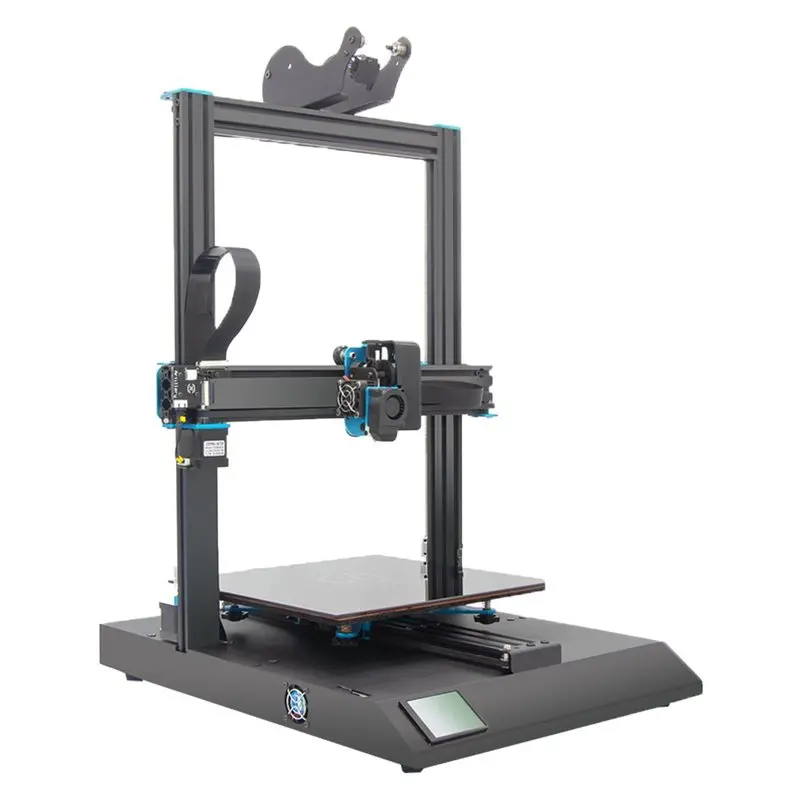 It's essentially a copy of the MakerBot Replicator. Behind the steel body is the MK10 material feed mechanism, which is currently the easiest to use and most sought after in the market for 3D printer components.
It's essentially a copy of the MakerBot Replicator. Behind the steel body is the MK10 material feed mechanism, which is currently the easiest to use and most sought after in the market for 3D printer components.
One of the features of this model is a high-precision material feed wheel, which ensures the same filament feed speed. The Duplicator 4S is equipped with a 0.4mm precision nozzle.
Specifications of cheap 3D printer Duplicator 4S
- Printer type: FDM;
- 3D printing materials: ABS, PLA, exotic;
- Working space: 225 x 145 x 150 mm;
- Minimum layer height: 100 microns;
- Maximum layer height: 500 microns;
- Number of extruders: 2;
- XY accuracy: 11 microns;
- 3D printing speed: 40 mm/s;
- Open Source: software;
- Compatible with materials from other manufacturers: yes;
- Heated table: yes;
- Nozzle diameter: 0.4 mm;
- Control panel on 3D printer: yes;
- Connection: USB, SD card.

Back to the list of 3D printers
Polar 3D Printer ($899)
Polar 3D belongs to a separate category of 3D printers in this top, since this model implements the polar coordinate system. This causes the table to rotate and the print head to move up, down, right, and left.
Thanks to the polar coordinate system, this 3D printer is powered by two stepper motors, so it consumes less power. In addition, it turned out to realize a larger size of the working area: 203 (table diameter) x 152 (Z coordinate) mm.
Rated $899, but there are special discounts for educational institutions. The discounted price is only $599.
Specifications of cheap 3D printer Polar 3D
- Printer type: FDM;
- Materials for 3D printing: PLA;
- Working space: 203 (table diameter) x 152 (Z-coordinate) mm;
- Minimum layer height: 50 microns;
- Maximum layer height: 400 microns;
- Number of extruders: 1;
- 3D printing speed: 40 mm/s;
- Open Source: no;
- Compatible with materials from other manufacturers: yes;
- Heated table: no;
- Nozzle diameter: 1.
 75 mm;
75 mm; - Control panel on 3D printer: no;
- Connection: USB, WiFi, SD card.
Back to 3D printer list
FlashForge Creator Pro ($899)
You've probably heard of this 3D printer. FlashForge Creator Pro is very similar to Makerbot Replicator 2X. This inexpensive 3D printer has 2 extruders, it has a steel closed case.
Other features include a table sizing system, and a guide screw that makes the guide system more stable and durable. The design is nothing special, but this model has earned positive reviews from the 3D community due to its reliability, versatility and ease of use.
Specifications of cheap 3D printer FlashForge Creator Pro
- Printer type: FDM;
- 3D printing materials: ABS, PLA, exotic;
- Working space: 225 x 145 x 150 mm;
- Minimum layer height: 100 microns;
- Maximum layer height: 500 microns;
- Number of extruders: 2;
- XY accuracy: 11 microns;
- 3D printing speed: 40-100 mm/s;
- Open Source: design and software;
- Compatible with materials from other manufacturers: yes;
- Heated table: yes;
- Nozzle diameter: 1.
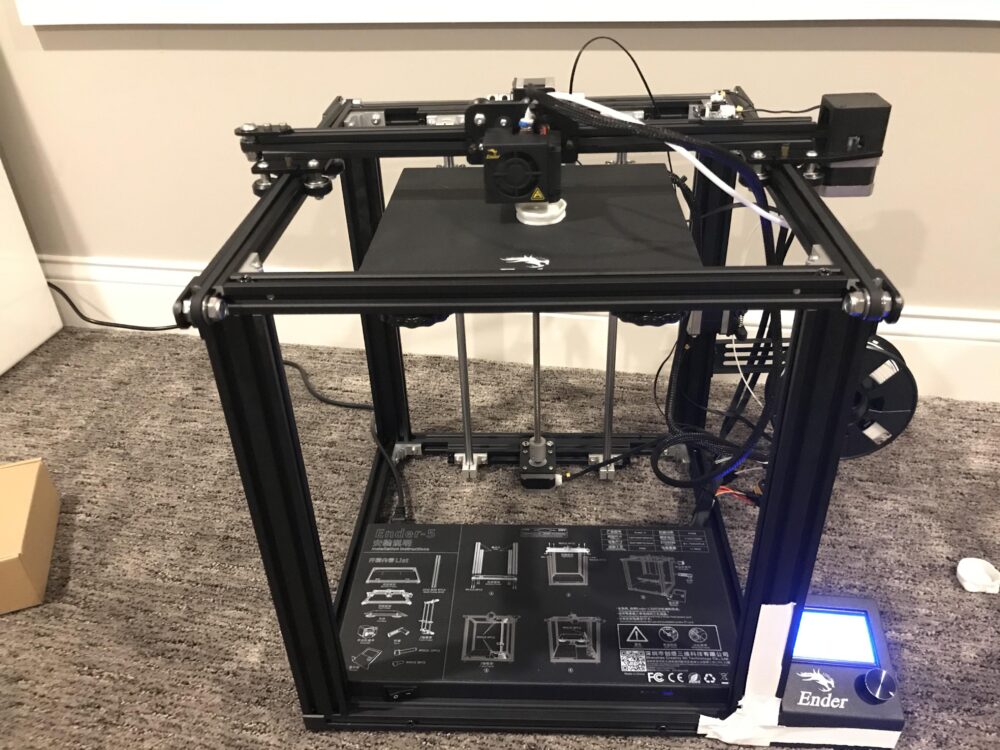 75 mm;
75 mm; - Control panel on 3D printer: yes;
- Connection: USB, SD card.
Back to 3D Printer List
Dremel Idea Builder ($899)
The Idea Builder is plug and play. This 3D printer is designed by Dremel. It has a color touch screen display. Sufficiently large working space - 230 x 150 x 140 mm. Unfortunately, the table is not heated. On the other hand, since only PLA plastics can be used, this model is great for classrooms and teaching labs.
Cheap Dremel Idea Builder 3D Printer Specifications
- Printer type: FDM;
- 3D printing media: PLA;
- Working space: 230 x 150 x 140 mm;
- Minimum layer height: 100 microns;
- Number of extruders: 1;
- Open Source: no;
- Compatible with materials from other manufacturers: no;
- Heated table: no;
- Nozzle diameter: 1.75 mm;
- Control panel on 3D printer: yes;
- Connection: USB, SD card.

Back to the list of 3D printers
Printrbot Simple Pro ($999)
Printrbot Simple Pro is a major upgrade of the original Simple. Same open design, no body. Like its predecessor, the Printrbot Simple Pro is compact and portable. All-metal construction for excellent vibration damping and shock resistance.
The main differences are the built-in color touch screen, the ability to connect via WiFi and the free cloud service (optional), which greatly improves the 3D printing process. Simple Pro has a 32-bit processor, which ensures smooth and fast movements. And at the same time, this model is included in our top 20 cheap 3D printers, since its cost is $999.
Specifications of cheap 3D printer Printrbot Simple Pro
- Printer type: FDM;
- 3D printing media: PLA;
- Working space: 200 x 150 x 200 mm;
- Minimum layer height: 50 microns;
- Number of extruders: 1;
- Open Source: design and software;
- Compatible with materials from other manufacturers: yes;
- Heated table: optional;
- Nozzle diameter: 1.
 75 mm;
75 mm; - 3D printer control panel: yes;
- Connection: USB, WiFi.
Back to 3D printer list
Prusa i3 Mk2 ($999)
This is one of the best 3D printers you can buy in this price range. All nodes are open-source licensed and part of the Rep-Rap project, so there are many copies around ... but all replicas are worse than the original.
The Prusa i3 Mk2 is equipped with a heated table that has technology to compensate for temperature differences in the center and corners. There is an automatic calibration system. And of course, amazing documentation. This is an extremely versatile 3D printer that you will 100% appreciate when you start printing with unusual materials such as PLA, PET, HIPS, Flex PP or Ninjaflex, etc.
The Prusa i3 Mk2 is a 3D printer that is constantly being developed and supported by the manufacturer. Its developer Josef Prusa regularly adds new features, software and design improvements (for example, the ability to color 3D print).